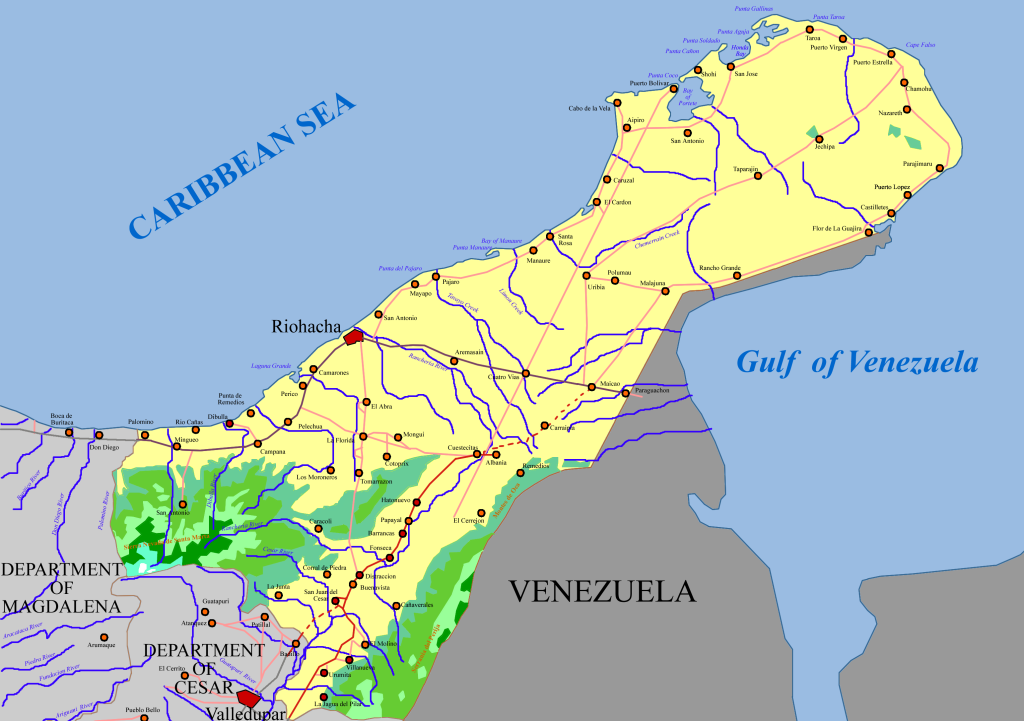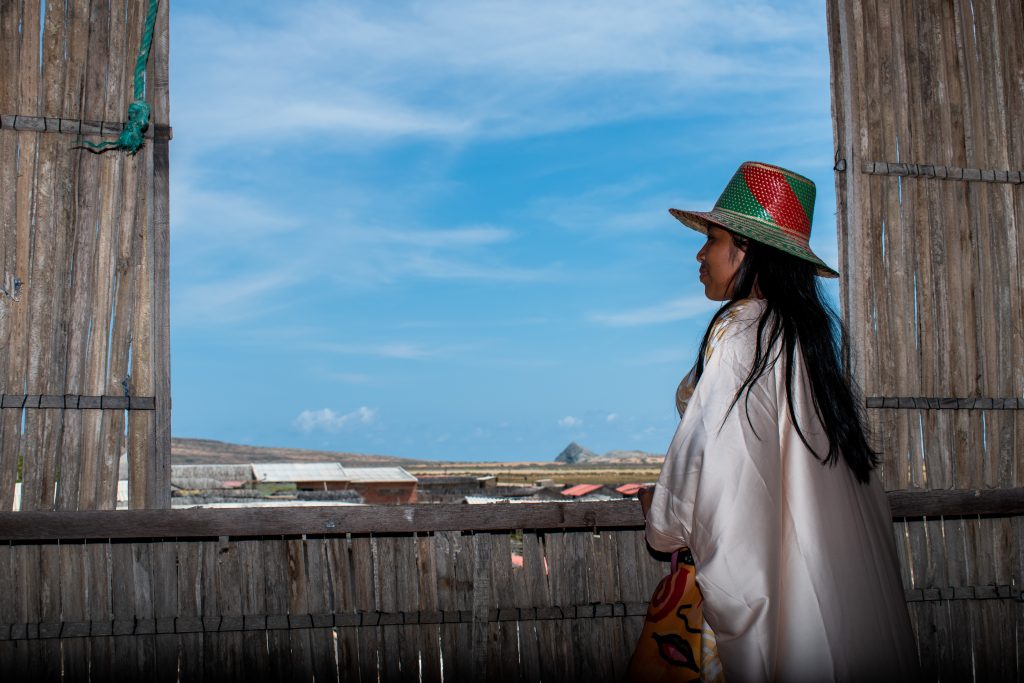The Wayuu language is spoken on the Guajira peninsula between Venezuela and Colombia by the largest indigenous group of the area, the Wayuu people. Of the estimated 764,000 Wayuu people, around 420,000 still speak the language according to the 2012 census. The Wayuu or Wayuunaiki language, also known as Guajira, is an Arawakan (Maipurean) language in South America. Wayuu is an important language for its family tree as many of the indigenous languages that make up the tree are extinct or poorly documented.
Grammar

Wayuu has two main dialects: Wüinpümüin, spoken in the northeast and Wopumüin, spoken in the southwest. While the grammar and vocabulary between the two differ, they are still mutually intelligible with each other. One of the biggest differences between the two being words used for the 3rd person feminine singular – Wüinpümüin uses jia while Wopumüin uses shia and the second person plural – Wüinpümüin uses jaya and Wopumüin uses jia. The language classifies their nouns with masculine, non-masculine, and plural suffixes. Wayuu is an agglutinative language and uses suffixes on verbs to display subject, tense, and mood information like Spanish, as well as personal prefixes. There is a tenth personal prefix called the “zero person” as it refers to an unspecified or undefined person. While word order is not strictly enforced, the ‘verb-subject-object’ order is typically used by speakers.
Literacy & Educational Presence
Like Spanish, the Wayuu language is written with the Latin alphabet. The language is taught in some schools along with Spanish, however, less than 1% of the Wayuu population is actually literate in Wayuu and somewhere between 5-15% is literate in Spanish. Various schools and cultural institutions are hoping to increase those numbers by encouraging bilingualism through dictionaries and translating literary works from Spanish into Wayuu. The Kamusuchiwoꞌu Ethno-educative Center (Spanish: Centro Etnoeducativo Kamusuchiwoꞌu) created the first illustrated dictionary between Spanish and Wayuu. In 2011, the Wayuu Taya Foundation in collaboration with Microsoft presented the first ever dictionary of technical terms. It was developed by both linguists and technological professionals. While literacy rates are low, the number of speakers are rising and various organizations are focused on teaching culture through music and arts.
History
The spoken Wayuu language is strong in the community as they still practice oral storytelling and uphold rituals in the language. There is a lot of pride in the cultural heritage, language, and identity in the youth of the area today. The language itself can provide insight into the under-studied Arawak languages and the indigenous history of the area, especially in the peninsula and its interactions with other powers that have come to the area over time. However, this specific history is not well documented despite the strong Wayuu presence in the digital world. Along with the previously mentioned dictionaries, there are online dictionaries and translation tools for Wayuu from Spanish. Overall, the emphasis is on growing literacy rates and use of traditional culture in a modern landscape and online as opposed to understanding and documenting the history of the area and its people and language.
Curious about how the language sounds? Hear it in these videos:
See how you can support the community here:
Learn more here:
Aikhenvald, Alexandra Y. “Morphology in Arawak Languages.” Oxford Research Encyclopedia of Linguistics. April 30, 2020. Oxford University Press. Date of access 25 Jul. 2025
Isocialweb. “Wayuunaiki: The Living Language of the Wayuu – Cosechabags.” Cosecha Bags, 24 May 2025, cosechabags.com/wayuunaiki-the-living-language-of-the-wayuu/.
“Wayuu Language.” Wikipedia, Wikimedia Foundation, 16 June 2025, en.wikipedia.org/wiki/Wayuu_language.
“Wayuu (Wayuunaiki).” Wayuu Language and Prounciation, 6 Jan. 2025, omniglot.com/writing/wayuu.php.

